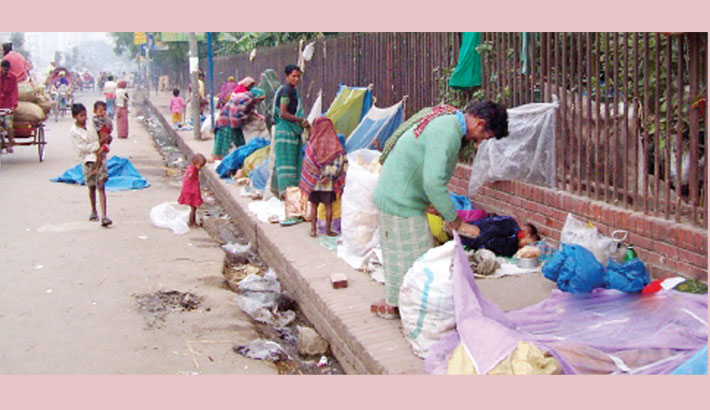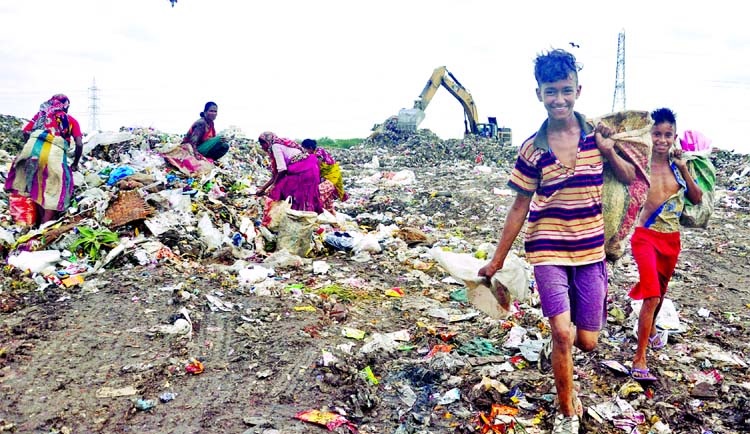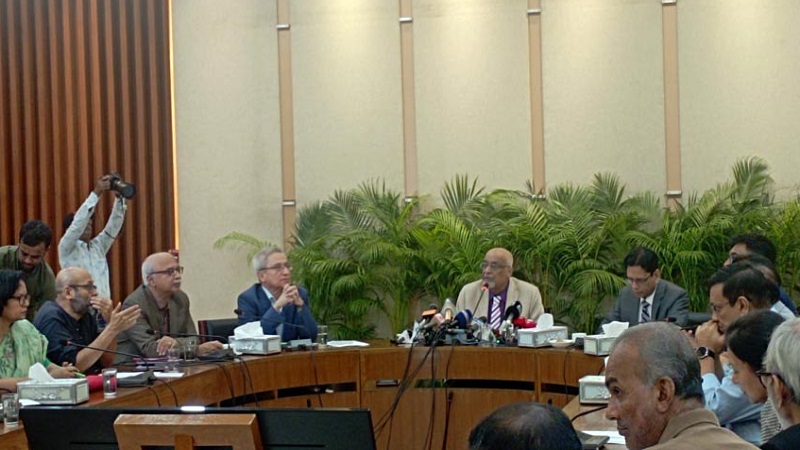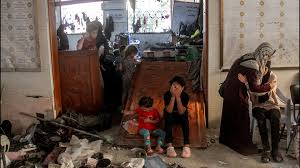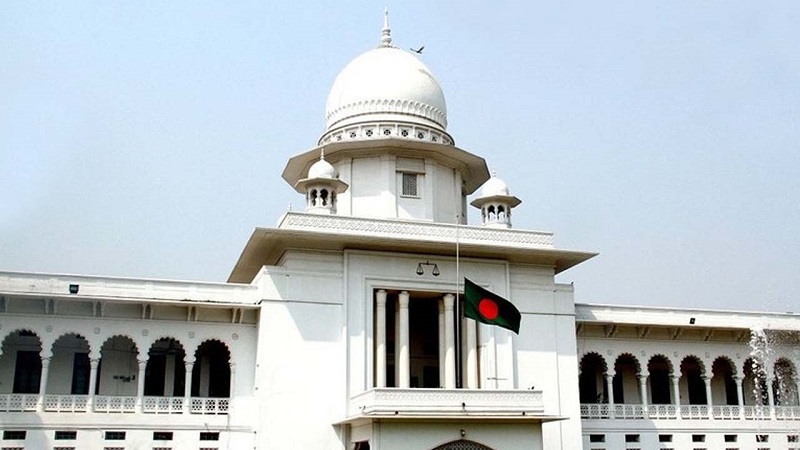Five days into the national lockdown on Monday, hundreds of homeless people were seen staying on the streets and pavements of Dhaka as the government has no quarantine plan for them.
In absence of any efforts to help them practice basic hygiene such as washing hands repeatedly and disinfecting their surroundings every now and then, homeless people living on the dirty pavements without access to water seemed badly exposed to coronavirus infection.
The government has already admitted limited scale community transmission and studies have shown that the novel coronavirus can get airborne but neither the government nor NGOs have come up with any plans to check if the virus established a chain of transmission among the floating population.
‘There is no scope of believing that the COVID-19 risk has decreased in our country,’ said Institute of Epidemiology, Disease Control and Research director Meerjady Sabrina Flora as she urged people to stay home on Monday during a routine press conference.
A day before the conference, Meerjady told New Age that the floating people could be a threat if infected for they keep changing their addresses every now and then.
She said that the idea of getting quarantined by imposing lockdown is about limiting contacts among people as the highly contagious virus look for vectors.
Homeless people, who either scavenge on city waste or ferry low-end goods among low-income people or live by begging, cannot afford to seek medical assistance and are mostly unaware of coronavirus.
‘Who cares if I catch a virus or two? I do not have a home to go to and stay safe,’ said Rozina, a 40-year-old single mother of five children, living in a tiny polythene shack on a pavement near Satrasta at Tejgaon.
Rozina represented a vast majority of the floating people who lost their homes to river erosions.
About a dozen other families live next to Rozina with kids as young as six months old, one of whom suffered fever last week.
These families are clueless about quarantine but heard that there was a virus around which was spreading.
The government does not have an official estimate on people living on the street but experts said that the number of floating people in two Dhaka city corporations would be between 40,000 and 100,000.
Studies have shown that many coronavirus carriers never show symptoms while many others exhibit mild symptoms and recover before they could realise their infection. But in the process they may get people with weak immune system get infected.
Romen Raihan, assistant professor at BSMMU’s public health and informatics department, said that the city’s homeless population was the most vulnerable to any infectious diseases in that that their malnourished bodies have poor immune system.
‘The government should ensure that the homeless have something to eat at this moment of crisis,’ said Romen Raihan.
Social welfare secretary Mohammad Jainul Bari said that they have the capacity to deal with 50 to 60 healthy homeless people but no arrangement for placing the homeless under quarantine.
Health secretary Asadul Islam declined to comment on the matter when asked about their preparedness.
Centre for Urban Studies honorary chairman professor Nazrul Islam said that keeping homeless people outside quarantine and allowing them to live in dirty places could bear disastrous consequences for the country.
Many countries have tried in accordance with their ability to help the homeless population. In Bangladesh there were small-scale individual.


